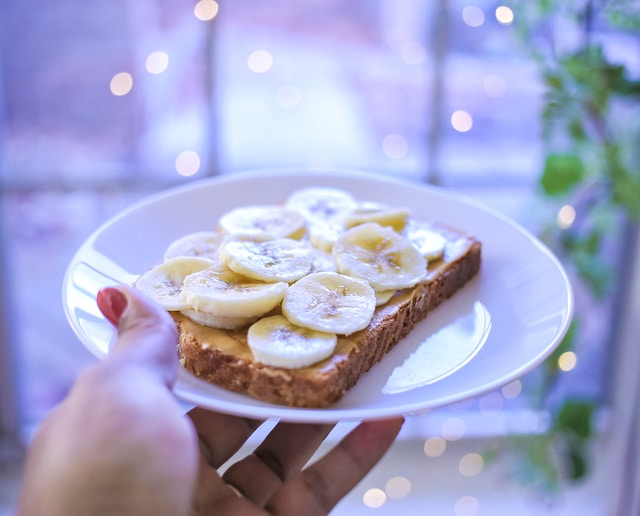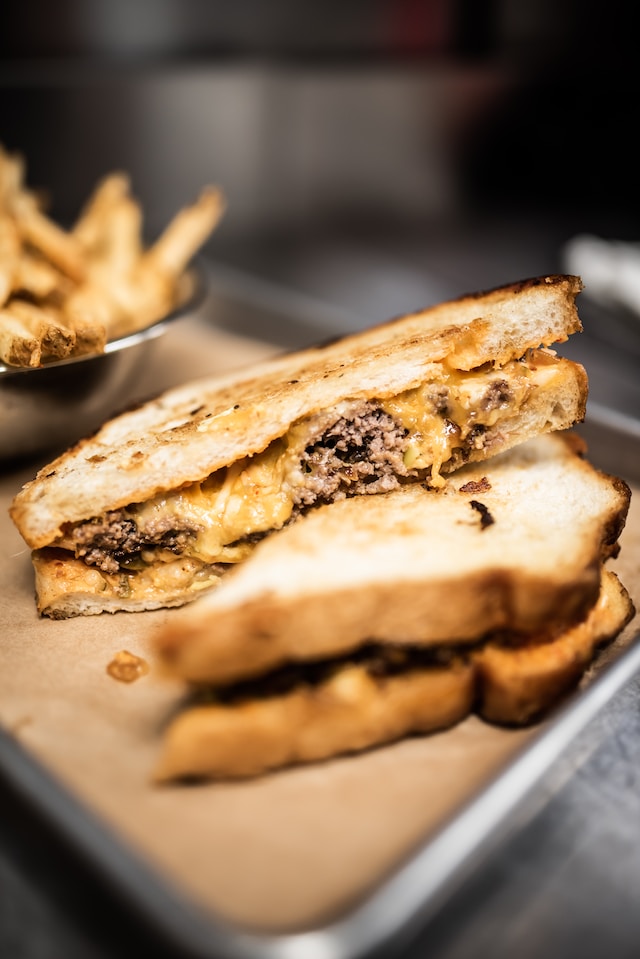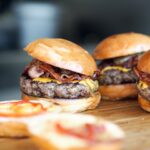How To Make Healthy Peanut Butter Sandwich Recipe-2023, Peanut butter is very versatile, healthy choice and it goes very well with most of the addition/additions, it is just a matter of your own choice.

What makes a peanut butter sandwich better?
Add other ingredients. Jam, honey and fruit are classic choices. Certain meats (like bacon) or vegetables (like celery or carrots) can also work well.
Use better bread. Plain white bread has no place in a civilized society. Prepare your sandwich with sourdough, rye or whole wheat. Better yet, use more exotic breads like French toast, a bagel, or a soft pretzel.
Use better peanut butter. I mean no disrespect to the J.M. Smucker company, but Jif is too nice. The sugar can be delicious, but here it overwhelms the nutty flavor. Try using a peanut butter made with only peanuts and salt. Also consider crunchy peanut butter; it can add a nice texture to your sandwich.
What are some good recipes for making a healthy peanut butter sandwich?
How depressing people. These puritanical answers. Peanuts are full of vitamins, minerals and protein. If you buy a good quality peanut butter or make your own, it’s part of a good nutritious diet. If you make your own bread or buy good quality whole grain bread, that’s also healthy, in moderation. Moderation is the key. You probably don’t want to eat peanut butter sandwiches every day. But once or twice a week, as a quick meal that re-energizes you, there’s nothing wrong with that. Toast the bread (which takes care of the “cooking” part) and spread a tablespoon of peanut butter on it.
There are 69 calories in a slice of whole grain bread (on average), and about 11% of that comes from fiber. You’ll also get about 4.4 grams of protein per slice. Peanut butter has 80 calories per tablespoon, unless you buy a brand with added sugar or oil. It also contains 3.5 grams of protein, 1g of fiber, 1.5 of sugar and 0 cholesterol. It also contains 8g of fat, but 75% of that is mono and polyunsaturated. Peanut butter is also a good source of niacin, magnesium, zinc, potassium, and manganese. Even if you double up and eat two slices of toast with 1 tablespoon of peanut butter each, you’re well within the 2,000 calorie per meal limit for a day, and that’s delicious.
Now, if you want an unhealthy PB sandwich, try Elvis’ favorite: Toasted Peanut Butter, Banana and Bacon. Just once, for the pure, sinful thrill of this one. You can have kale salad for dinner if that makes you more virtuous.
How To Make Healthy Peanut Butter Sandwich Recipe:
INGREDIENTS:
2 tablespoons peanut butter
2 slices of sandwich bread
½ banana sliced
Butter for grilling
½ cup grape tomatoes
1 small cucumber sliced
INSTRUCTIONS:

STEP – 1
Heat a non-stick pan over medium heat. Spread the peanut butter onto 1 slice of bread, and top with the sliced banana, and the remaining slice of bread.
STEP – 2
Butter both sides of the sandwich and place it into the hot pan. Grill for 2 minutes before flipping and grilling for an additional 2 minutes or until the sandwich is golden brown on both sides.
STEP – 3
Remove the sandwich from heat and allow it to cool down to room temperature before packing it into a lunch container with veggies.
NUTRITION FACTS:
Serving: 1 sandwich, Calories: 424kcal, Carbohydrates: 60g, Protein: 17g, Fat: 15g, Saturated Fat: 3g, Polyunsaturated Fat: 4g, Monounsaturated Fat: 6g, Trans Fat: 0.01g, Sodium: 443mg, Potassium: 1095mg, Fiber: 8g, Sugar: 19g, Vitamin A: 875IU, Vitamin C: 25mg, Calcium: 171mg, Iron: 3mg
If I only eat oatmeal, apple, carrot, and peanut butter sandwiches, what nutritional deficiencies will I develop?
Think about this: 90% of you are not you at the cellular level…you have 100 trillion microorganisms in your body versus only 10 trillion human cells. We can’t survive without them because they do many jobs to help us survive and thrive…tasks like absorbing vitamins and minerals, helping our immune system fight to protect us, and they work also to keep our intestinal wall intact. These bacteria, yeasts and fungi literally make up 90% of our cellular makeup… How amazing to think about it! Now, what determines which species we will be infested with? Food! The most powerful thing we can do to be populated with the most beneficial types of microorganisms is to eat a very diverse diet centered on fiber and healthy fats. The more our choice of food is diversified “in this context”, the healthier we will be because we will then be in a state that microbiologists call symbiosis. This is when we have a healthy ratio of the most beneficial microorganisms on our body.
Limiting your diet to a handful of foods could leave you deficient in beneficial bacteria, yeasts or fungi and an overgrowth of bacteria, yeasts and fungi that harm your health. These little insects love fiber…give them more than 40 grams of fiber a day from a varied diet and they’ll reward you with optimal health. I focus on all kinds of greens, vegetables, fruits, nuts, berries, seeds, grass-fed meat, pasture-raised chicken and eggs, wild-caught fish, water clean, fresh herbs and spices and I have been at my ideal weight and in excellent health for a few years now. You might agree with the items you mention, but if you really care about AGING SUCCESSFULLY… I highly recommend a more varied diet consisting of the foods I mention as close to how, when and where they came out earth or water. .
Is it okay to eat a peanut butter sandwich while on a diet?
Usually, weight loss requires you to exercise more and eat fewer calories. This creates a calorie deficit that forces your body to burn body weight for energy. In the process of eating less, high calorie foods are generally avoided. Peanut butter, with nearly 200 calories per 2-tbsp serving and 16 grams of mostly unsaturated fat, seems to fall into this category. Peanut butter is often paired with low-fat foods, such as white bread and jelly on a sandwich, or chocolate chips or butter in cookies.
If you include peanut butter in a low-calorie diet and budget for the calories it provides, you can include it in a weight loss diet. Peanut butter falls into the category of nutrient dense foods, which means it provides a wealth of nutrients in all of its calories, but of course too much of any food will make you gain weight, so moderate it. portion size.
READ MORE LIKE THIS:
How To Make Tacos Dorados-2023
How To Make An Oreo Cookie Recipe At Home-2023
How To Make Donuts With Cake Mix Recipe-2023
How To Make Burger King Zesty Sauce-2023
How To Make Butter Chicken Spicier-2023

Is peanut butter really fattening?
A 2 tablespoon serving of peanut butter contains 16 grams of fat. Although it may seem like fat makes you fat, some types are actually beneficial for your health and weight management. About 81% of the fat in peanut butter is unsaturated, the type of fat that contributes to heart health. Even when you’re watching your weight, the Institute of Medicine recommends that between 20 and 35 percent of your daily calories come from fat, mostly unsaturated types, to keep your hormones regulated and allow for vitamin absorption. For a 1,500-calorie diet, for example, you need 33 to 58 grams of fat per day — a serving of peanut butter certainly fits that allowance.
While a serving or two of peanut butter won’t make you gain weight, it doesn’t give you permission to eat an entire jar in one sitting. Even healthy foods can make you fat if you eat too much of them. A 2 tablespoon serving of peanut butter contains almost 200 calories. Downing three servings adds 600 calories to your daily diet. If you add this, but don’t increase activity or reduce other calories, you’ll likely gain weight.
BENEFITS OF PEANUT BUTTER:
1. Rich in potassium
Peanut butter is high in potassium, which may help lower your risk of stroke, heart disease, and high blood pressure. Potassium can also help regulate your hormones, such as the stress hormone cortisol, helping you better manage anxiety and stress.
2. Protects Against Alzheimer’s Disease
Peanut butter is also high in niacin, and studies suggest that eating niacin-rich foods can significantly reduce your risk of Alzheimer’s disease. Peanuts are actually one of the highest niacin foods.
3. Provides a healthy source of protein
Looking for a healthy post-workout snack? Peanut butter on apple slices is one of the best options out there. For what? Peanut butter is a great source of healthy plant-based protein, which helps your muscles repair themselves and gives you energy after a long workout.
4. Fills you up
Because of its high protein and healthy fat content, snacking on peanut butter helps you stay full longer. When trying to lose weight, it’s important to eat foods that help you feel full and not deprived, as this can actually prevent you from overeating.
5. Contains Free Radical Scavenger Resveratrol
Peanut butter contains an important antioxidant called resveratrol, which has been shown to help fight free radicals in the body. Free radicals can contribute to certain cancers and heart disease.
Why is peanut butter considered a “healthy fat”?
There are three main types of fats: saturated, unsaturated and trans fats. Most fat-containing foods contain both saturated and unsaturated fats, but contain more of one kind than another. Unsaturated fats are considered good for the heart, unlike saturated fats and trans fats which are considered unhealthy. Most of the fats (about 81%) found in peanut butter are unsaturated fats.
Saturated Fats: are often found in buttery foods like cakes, cookies, etc., or in animal products like milk, cheese, or meat. Diets high in saturated fat can lead to high cholesterol and cardiovascular problems.
Trans Fats: are fats that have been hardened by a process called “hydrogenation” which increases the shelf life of the fat. Trans fats are found in processed foods, some potato chips, crackers, cookies, etc. Eat as little trans fat as possible, as it is a major contributor to high cholesterol.
Unsaturated Fats: are mainly found in oils and plants. Eating unsaturated fats can lower your cholesterol and reduce your risk of heart disease. Peanut butter is considered a source of unsaturated fat.
Does a peanut butter sandwich qualify as healthy food?
Peanut Butter is one of the health beneficial diets that are rich in protein and provides an instant boost to our energy.
Here are the lists of nutrients, minerals, and vitamins present in peanut butter:
Protein: 7.02 grams of protein per 2-tbsp serving, Magnesium: 57 milligrams of magnesium in each serving, Phosphorous: 107 mg of phosphorus in each serving, Zinc: 0.85 mg of zinc in each serving, Niacin: 4.21 mg of niacin per serving, Vitamin B-6: 0.17 gram of vitamin per serving.
Here are some of the benefits of eating peanut butter sandwiches:
Helps in weight loss
Boosts heart health
Increase protein in the body
Maintains blood sugar level
Reduces the risk of breast disease




201 Comments